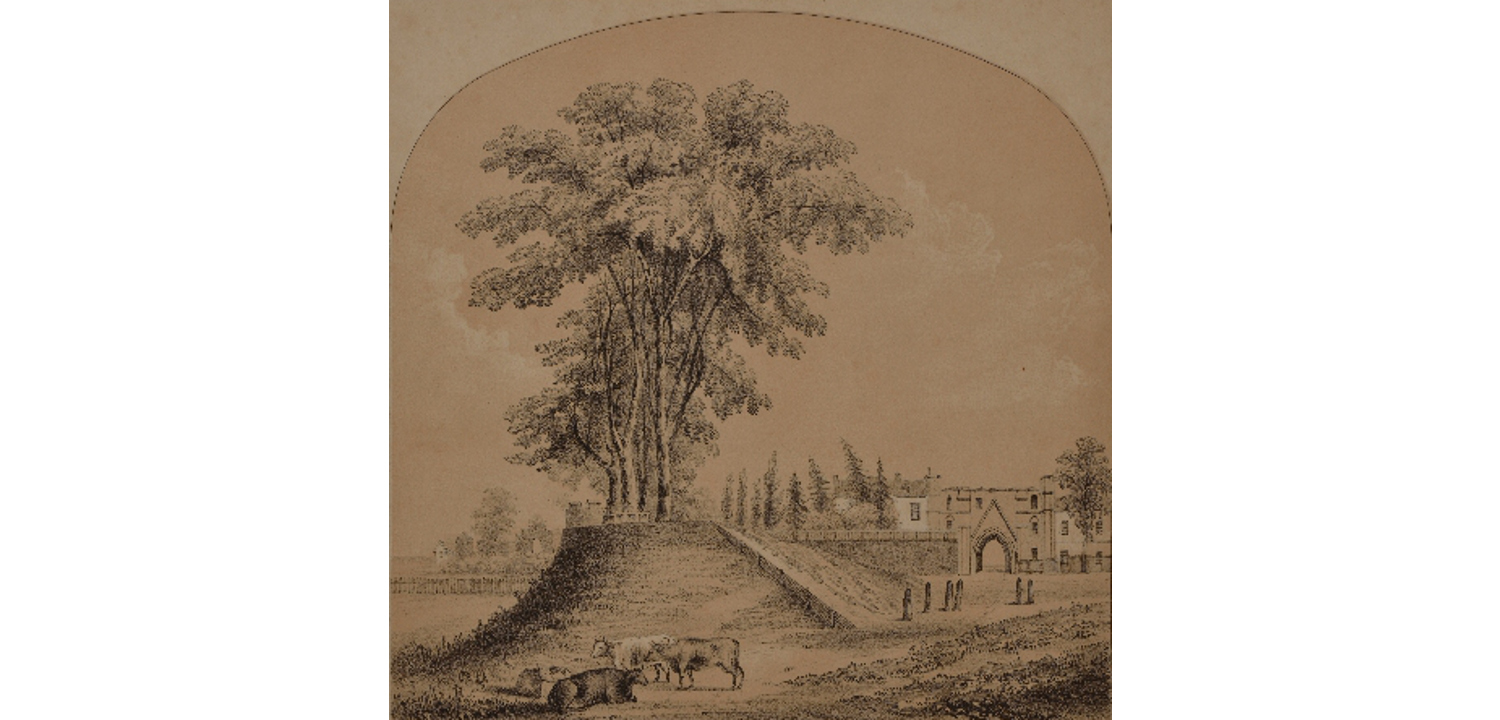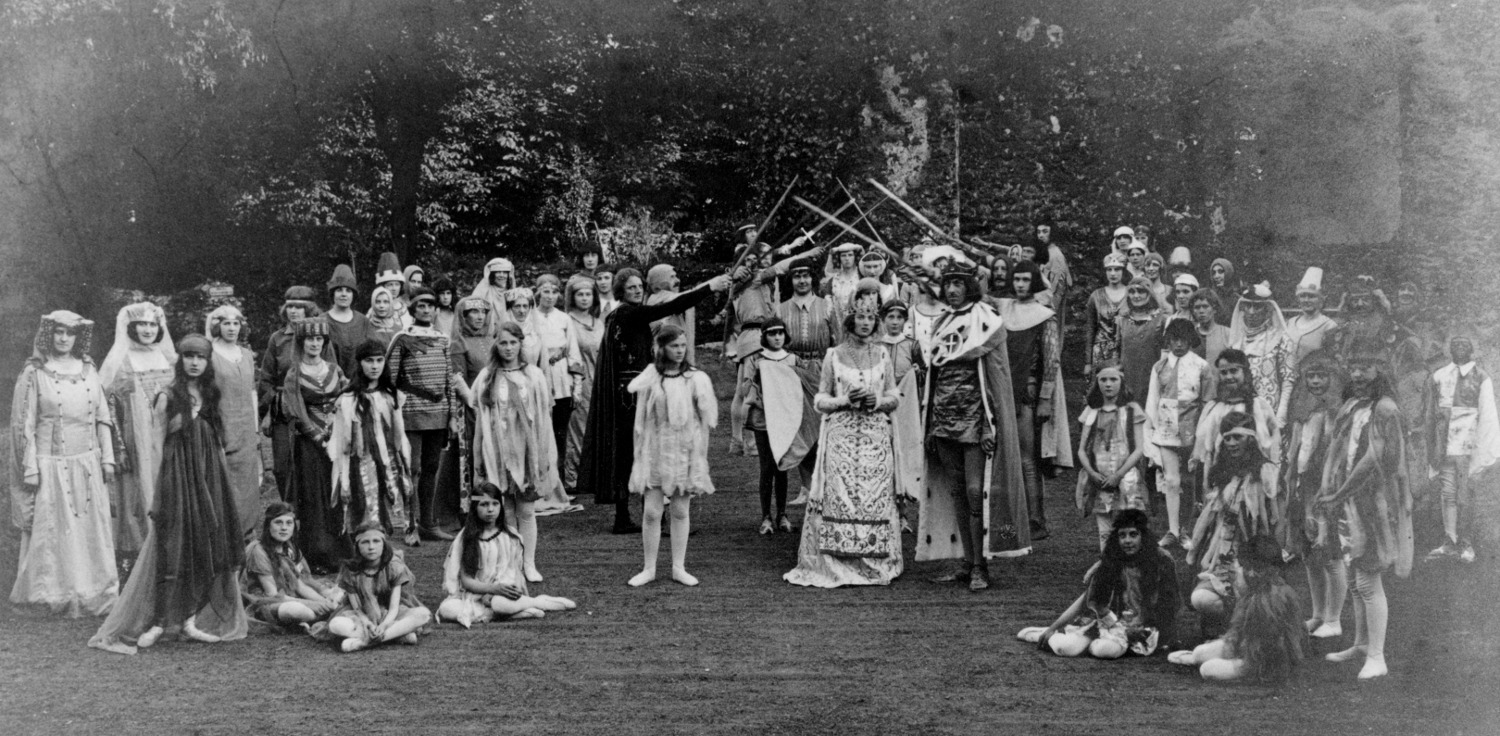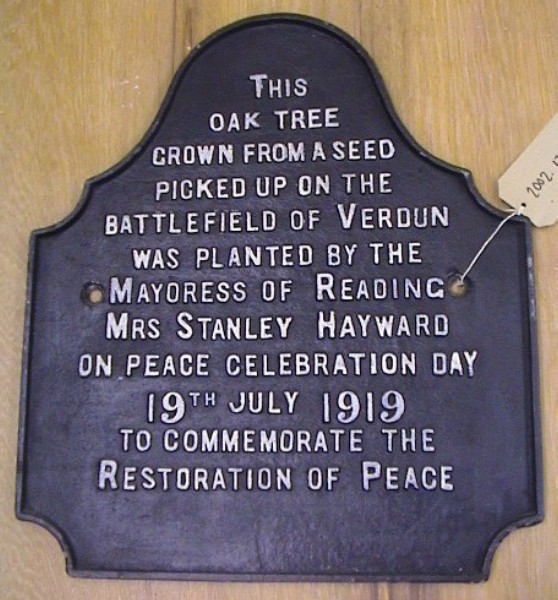For almost 900 years, the Forbury Gardens has been the open space that links Reading with its royal abbey. Our community is justifiably proud of this beautiful and historic open space at the heart of the Abbey Quarter. This blog explores some of the stories from the Gardens’ long and varied history.
Reading Abbey
Reading Abbey was founded in 1121 by King Henry I, and originally the Forbury Gardens was a rough area of open ground inside the abbey’s large precinct. The abbey church towered over this part of Reading and could be seen all over town. At this time, the area was known as ‘the Forbury’, an old English name meaning the place in front of the burgh, the borough. It was where horses grazed, and pilgrims waited for services at the abbey church.
In 1539, the abbey was closed by King Henry VIII and the Forbury became an informal open space until it was laid out as a town park, opening on Easter Sunday in March 1856. Local people collected money to buy the land and the Abbey Ruins, which became central to Victorian leisure time in Reading.

The ruins of the south transept chapels, Reading Abbey during 2017-18 restoration
The Abbey Gateway
The Abbey Gateway, which still overlooks the gardens today, divided the monks’ private living quarters from the more public areas of the abbey occupied by the Forbury. In the 1560s, Queen Elizabeth I turned the abbot’s house, which stood just through the gateway, into a royal palace. After Elizabeth’s death, the palace fell out of use and eventually new houses were built alongside the gateway. In the 18th century, one of these was home to the Reading Ladies’ Boarding School, which used the gateway as a classroom. From 1785-86, a particularly talented pupil studied here: the future novelist, Jane Austen.

The Abbey Gateway after restoration in 2018
Markets and fairs
Reading Abbey was dedicated to the Virgin Mary and two saints – Philip and James. On their feast days, the abbey held huge markets in the Forbury, selling all manner of food, drink, textiles, household goods and more luxurious products from abroad like spices and furs. The markets held in the Forbury were much bigger than the weekly markets in the town.

A reconstruction drawing of a medieval fair in the Forbury in front of the abbey church's west front
In the 1700s, a huge yearly market called the Reading Cheese Fair was held in the Forbury. You could buy hard cheese, soft cheese, mouldy cheese and stinky cheese. You could also buy cows, cloth and hops to flavour your beer. Alongside the Cheese Fair, there was a Pleasure Fair, featuring rides, games and displays of wild animals.

Forbury Hill and the Abbey Gateway from the north in 1850
Forbury Hill
The origins of the Forbury Hill are something of an enigma but in 2017 the University of Reading's Round Mounds project took core samples to see if there was dating evidence for hill's earliest phases. They drilled boreholes in two locations – one in the middle of the mound, the other a few metres to the north. In the laboratory, the cores were examined, and small samples of sediment were taken to look for material suitable for dating.
The samples were full of brick and tile. This suggests the mound cannot be any earlier than the 13th or 14th century – seeming to rule out the possibility that the mound was a Norman castle motte, or indeed any other sort of earlier monument connected to the Viking camp of AD870-71. The abundance of tile in the cores suggests that it was partly made up of demolition rubble. The demolished buildings of the abbey would be the most likely source. This evidence seems to support its origin of Forbury Hill as part Reading’s 17th century Civil War defences.
In 1643 this hill was part of a ring of defences hastily dug out by an army defending Reading from attack. The walls of the abbey were also used as part of the defences. The attacking army (Parliamentarians) wanted Parliament to have more say in ruling the country. The defending army (Royalists) supported the king. The Royalists lost control of the town, but later took it back. The Civil War, which caused sieges and battles all over the south and midlands, was eventually won by the Parliamentarians.

This map from 1802 shows Forbury Hill with a triangular shape, typical of earthworks created for siege defences
The Maiwand Lion
The Forbury Gardens were laid out and developed from 1856. The enormous lion sculpture at their centre commemorates 328 members of the Royal Berkshire Regiment. They were killed at the Battle of Maiwand in Afghanistan in 1880. The war was intended to counter Russian influence in Afghanistan by putting a ruler friendly to the British Empire in charge. The battle ended in disaster, with almost half the British forces killed.
The 31-foot war memorial in the Forbury Gardens was unveiled in December 1886. It was sculpted by George Blackall Simonds and decorated with a laurel frieze garland that ran around the top of the pedestal. The pedestal was originally faced with terracotta and brick, but this was replaced with Portland stone in 1910.

The Forbury Lion before 1910, with the Abbey Gateway behind
Dr Watson and Dr Hurry
The character of Dr Watson in the Sherlock Holmes stories is based on a real medical officer, Surgeon-Major Alexander Preston, who survived the Battle of Maiwand. In A Study in Scarlet, Watson describes his fictional experiences: “The campaign brought honours and promotion to many, but for me it had nothing but misfortune and disaster. I was removed from my brigade and attached to the Berkshires, with whom I served at the fatal battle of Maiwand".
Close to the Lion is a grey stone cross on a small mound. This was set up by Dr Jamieson B. Hurry in 1909, in memory of King Henry I. Dr Hurry had a passion for the history of Reading Abbey. He wrote books, had plaques set up inside the ruins, led guided tours, commissioned historical paintings and in 1920 even organised a pageant to celebrate 800 years since the abbey’s foundation.

The marriage of John of Gaunt and Blanche of Lancaster, scene from the Reading Pageant, 1920
The Verdun Oak
There is a very special oak tree at the west end of the Forbury Gardens between the Maiwand Lion and the main Victoria Gate. This oak tree was grown from a seed picked up on the Battlefield of Verdun and was planted by the Mayoress of Reading, Mrs Stanley Hayward, on peace celebration day, 19 July 1919, to commemorate the restoration of peace after the First World War.
The Battle of Verdun in 1916 was a major German offensive on the Western Front. This battlefield was notorious as one of the more destructive of the war, so much so that the scars of trenches and shell holes can be seen even today. The oak trees which witnessed the brutality and ruin would have been shattered and blasted by shell fire, and it is a wonder that any part of them survived at all. Over the years, the acorn that was collected has grown to become an attractive, broadly spreading tree. It is a fitting reminder of the human cost of war and the benefits of peace.

The original Verdun oak plaque from 1919, now part of the Reading Museum collection
Explore
You can discover more about the Forbury Gardens and the Abbey Quarter on our interactive online map.
The Gardens and Abbey Ruins are open daily.

The Maiwand Lion and bandstand in the Forbury Gardens





